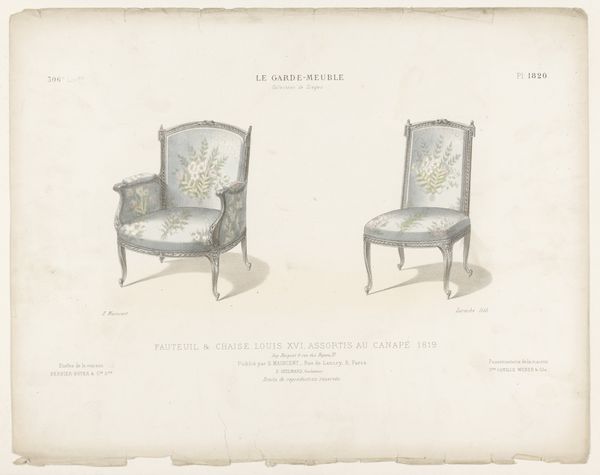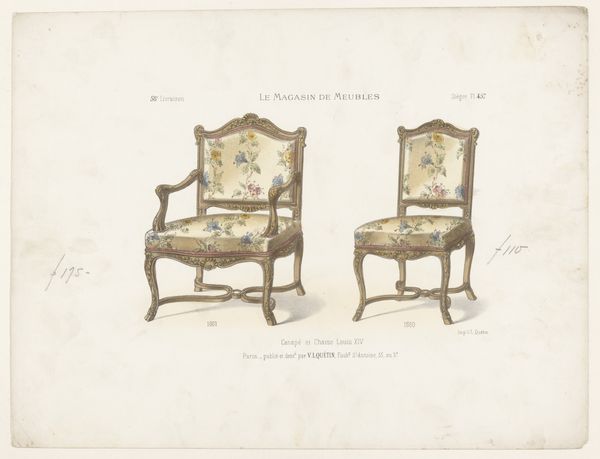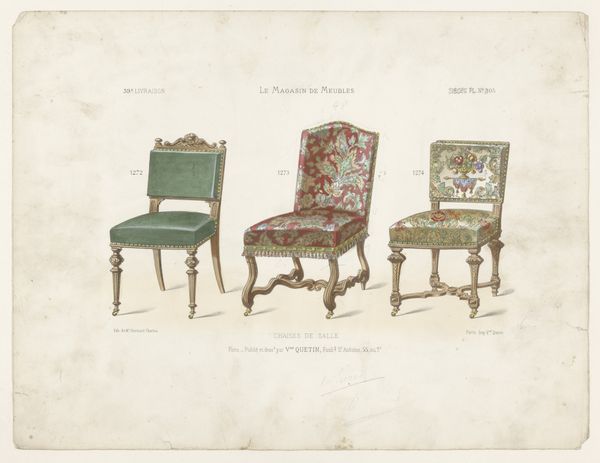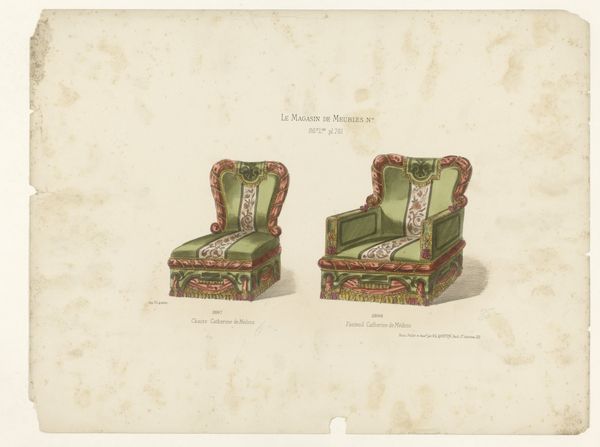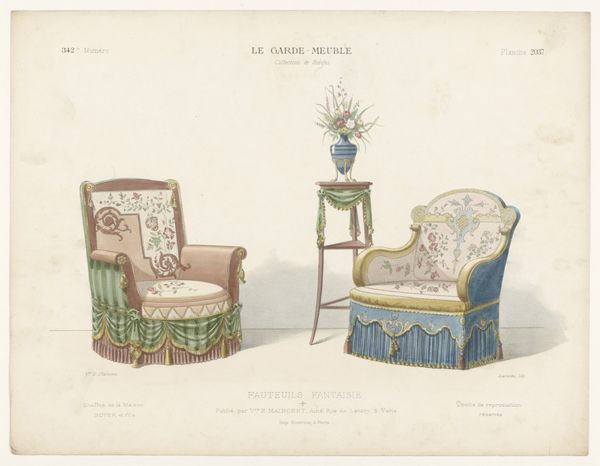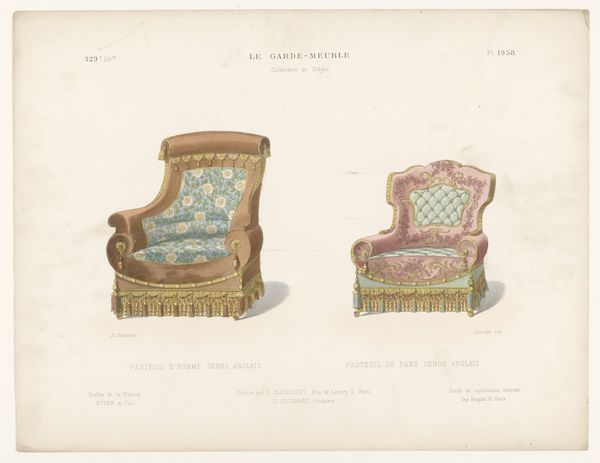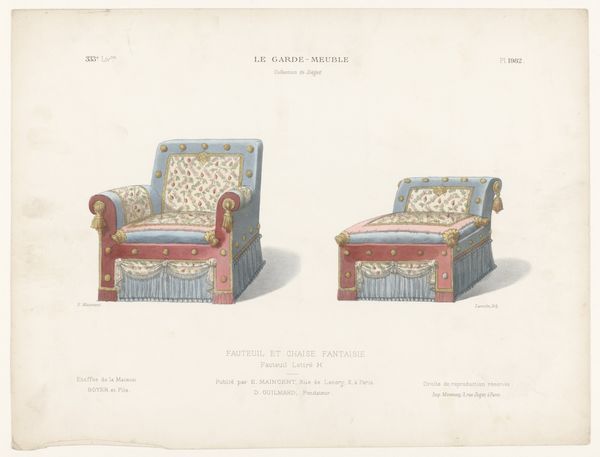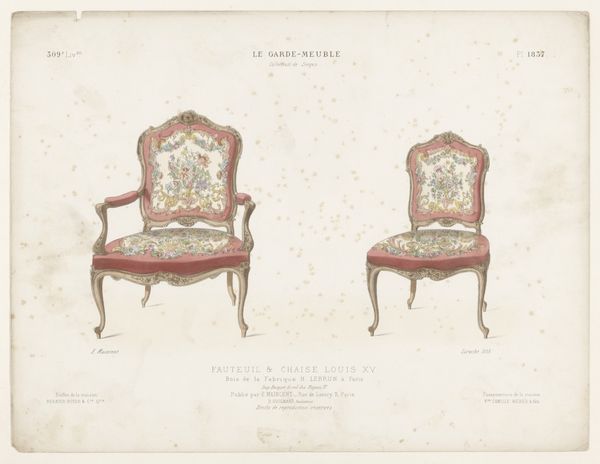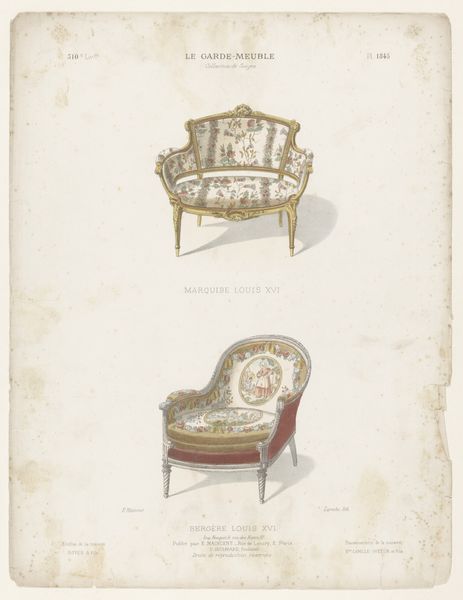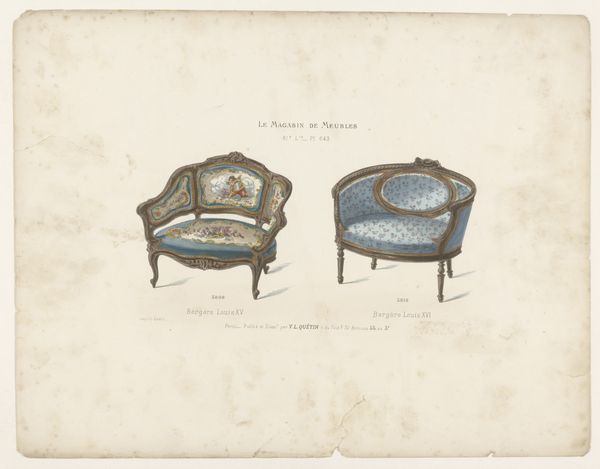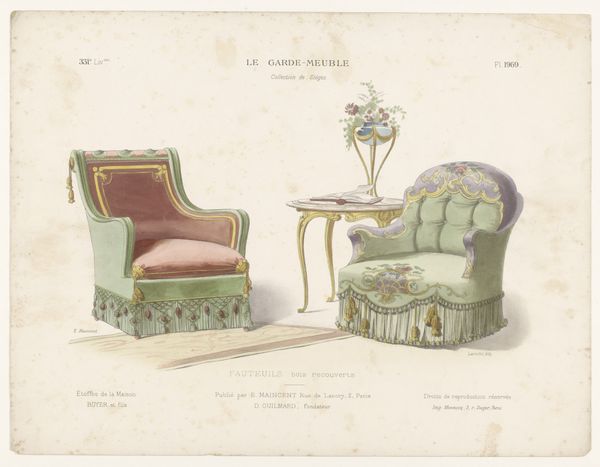
drawing, print, paper
#
drawing
#
neoclassicism
# print
#
furniture
#
figuration
#
paper
#
line
#
academic-art
#
decorative-art
Dimensions: height 275 mm, width 359 mm
Copyright: Rijks Museum: Open Domain
Curator: Ah, yes, this print: *Fauteuil en stoel*, or "Armchair and Chair," made sometime between 1885 and 1895 by Léon Laroche. An exquisite rendering of furniture! Editor: It’s such a delicate drawing! It feels very precise and… almost clinical in how it presents these two chairs. What can you tell me about why something like this would be made? Curator: Well, consider the period and the title of the series, “Le Garde-Meuble”. These prints weren't meant to be artworks hanging on a wall, but more like illustrations for a catalog. Think of it as a very fancy IKEA furniture catalogue from the late 19th century! This drawing represents neoclassicism combined with decorative art. What does that tell you about who would consume this? Editor: That’s fascinating. So, this was less about artistic expression and more about…design and commerce? That changes how I see it completely! I guess the “academic art” style reinforces that. It’s showcasing an ideal form, almost like a blueprint. How were images like this distributed and viewed at the time? Curator: Exactly! The social context is key. This was likely circulated amongst wealthy clientele or furniture makers looking to reproduce these designs. Museums also played a role, archiving and displaying these for study. Do you think the detailed rendering of the chairs reflected how they wished to convey themselves at the time? Editor: Definitely. Knowing it's essentially marketing material really puts the emphasis on craftsmanship and luxury, doesn’t it? It’s not just a chair; it's a symbol of status and refined taste. I had thought these images were works of art hanging on someone's wall. How wrong I was! Curator: It’s all about considering the historical and social context, isn’t it? The politics of imagery shaped then is certainly something worth reflecting on now. It definitely gives us insight into how tastes were formed and maintained in 19th-century French society. Editor: Absolutely! It makes me wonder about the hidden power dynamics behind something as seemingly simple as a furniture catalog. I'll certainly think twice before dismissing anything as "just" a design print from now on!
Comments
No comments
Be the first to comment and join the conversation on the ultimate creative platform.
